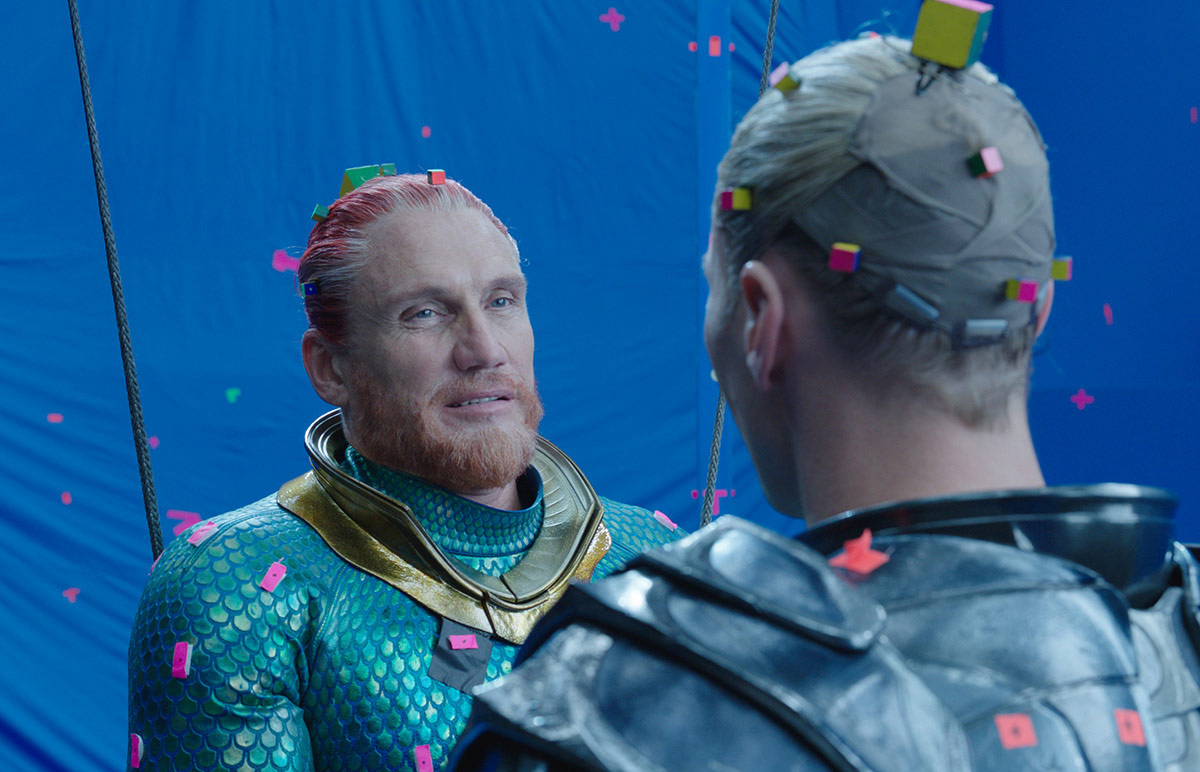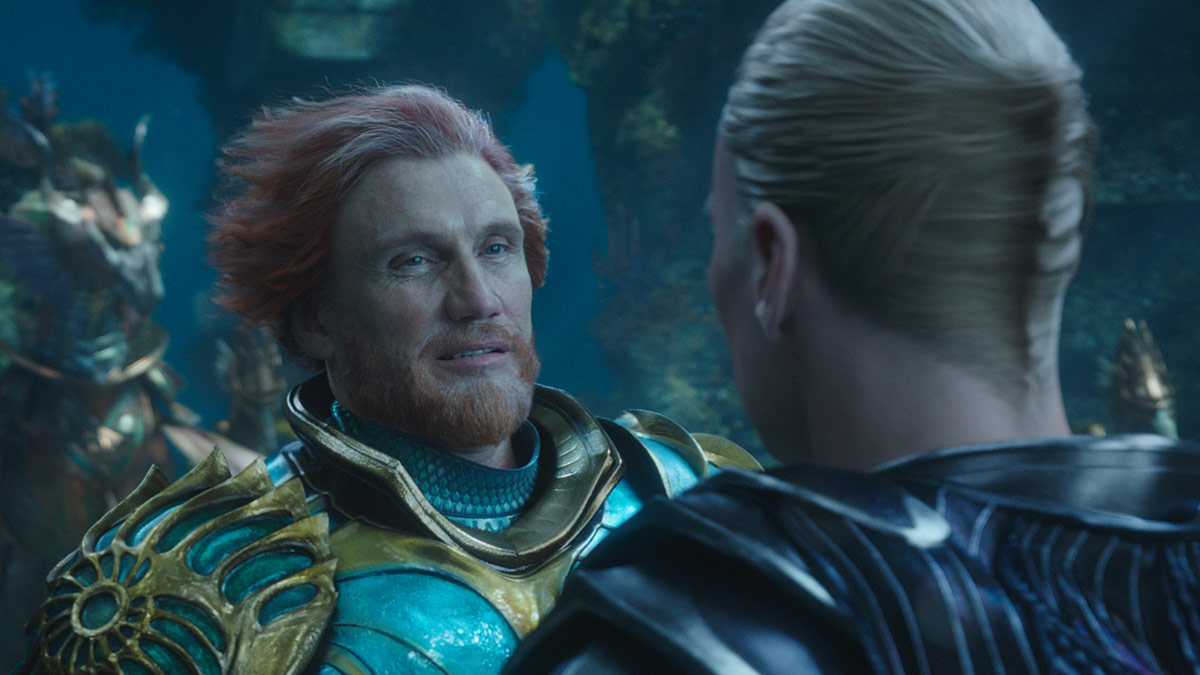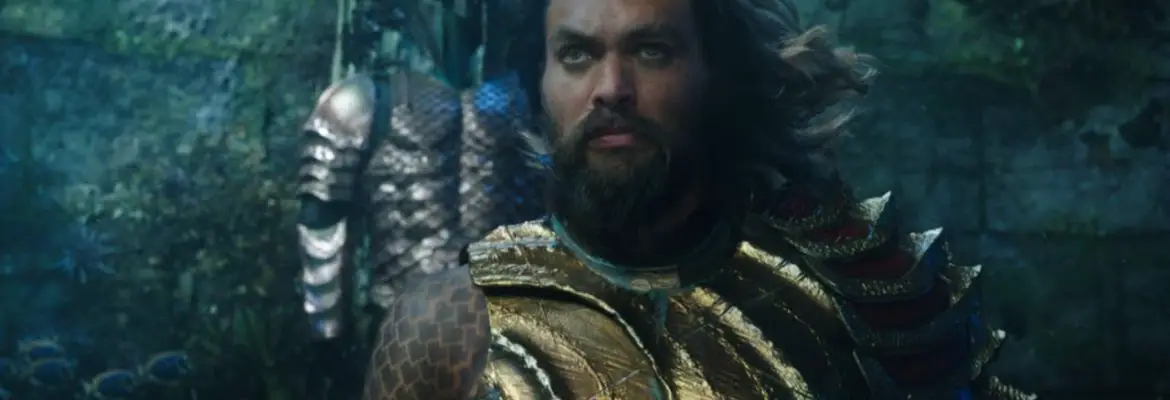Why Underwater CG Hair Was So Hard To Get Right On ‘Aquaman’
Aquaman introduced audiences to a new environment–an undersea world where the characters can talk, fight, and swim at high speed. While making actors look believable in an underwater environment required many different effects, lighting techniques, and harnesses, the most difficult effect proved to be the CGI hair.
The CGI hair was a final touch. First, actors filmed scenes ‘dry for wet’, which is exactly as it sounds, with the actors filmed on dry sets made to look underwater in post-production.
The underwater effect centered on suspending actors from hip harnesses on ‘tuning fork rigs’, which allowed actors to emulate floating underwater.
Then in post-production, the actor’s real hair and clothing was replaced with digital recreations to simulate this underwater movement. This difficult task, required ILM, under the VFX supervision of Jeff White, to run 400 hair simulations. The hair needed to work in unison with the movement of the actors on these rigs to complete the overall naturalistic effect.
Studying Hair Movement
ILM began the process by studying real human hair movement underwater. For this, White used the hair of his eight year old twins as references.
“What we realized right away was that our tools were really built largely around animal hair, where you have lots of guide curves,” he told Cartoon Brew. “[B]ut you can get away with a lot of interpolation between those guide curves because they generally move together within patches.”


Tracking markers held actor’s hairlines in place for seamless integration with the cg hair design.
ILM proceeded to create simulations of numerous hairstyles in all manner of movement underwater, whether long and flowing, short or cropped, or the unique movement of facial hair like beards. “You can get a lot of strands going their own direction but you also get a lot of hair that kind of stays clumped together when it moves around,” said White. “All of that was taken into account in terms of the tools that we were building out for doing underwater hair simulation.”
White also found that even with all this information, you couldn’t just run the simulation. The hair might conform to physics, but not look flattering on the characters.
Director James Wan also provided certain guidelines to ILM on how he wanted the hair to look. He wanted the hair to react to body movement, especially lifting up. Apart from sitting clear from the face, to avoid impacting the actor’s performance, the hair needed to part as the head moved. In fact, ILM had to make sure the CG hair did not distract from the actor’s performance.
ILM made their own contribution to the hair’s overall look, adding volume which conformed to comic book art of both Aquaman and Mera.
Updating Haircraft
CG hair is not a new phenomena for ILM. They developed and used their software, Haircraft, for Warcraft. For Aquaman and its underwater environment, White said new, additional tools gave “much finer control over the way that hair clumps together, what sticks together and what flows free, and then being able to run hair sims in multiple passes.”
A base simulation gave an overall shape to the hair, with individual hair strands separated to give the underwater effect.
Tracking Markers, and Water Simulations
On set, ILM matchmoved the actors, by fixing tracking markers to their hair, along with other forms of tracking geometry. This locked actors’ hairlines into place, as hairlines proved quite difficult to integrate into the cg hair design.
ILM also ran cg water simulations with digital doubles of the characters with hair sims producing positive results. Though some additional tweaks helped with tufting dynamically through the shot down the length of hair. Often it would look good at the top of the head but it wouldn’t have the naturalistic movement required at the end of the hair strands.
Jason Momoa’s beard presented additional challenges. Sometimes it was completely cg. Other times, ILM manipulated his beard hair by warping and combining additional layers in compositing.
The cg hair was so important to get right, that ILM brought it to James Wan for final approval. “One of the key ways of [getting approvals] was to get it 90 per cent of the way there and then we’d have post-sim sculpting tools that we could use to finish out the shapes or take care of stray hairs that weren’t looking too good,” said White.
Aquaman’s cg hair was largely successful, despite some criticism. The criticism is harsh considering how innovative the effect is.




